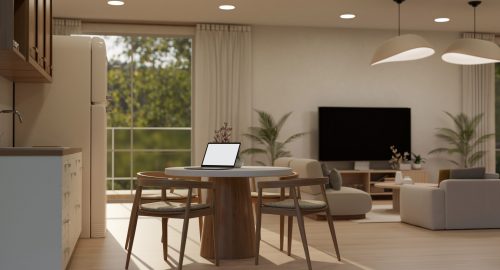Air conditioning has become a household essential during Minnesota summers. However, it’s one we often take for granted, not realizing its incredible worth until we’re stuck in the heat without it. We’re especially lucky to have A/C so common and accessible. Less than 90 years ago, it was just becoming available for household use and was a large, expensive system. To help understand how far we’ve come, here’s a look at the history of air conditioning.
1851: Mechanical Refrigeration Lays the Foundation for Air Conditioning
Physician and inventor Dr. John Gorrie began experimenting with the idea of “artificial cooling” in the 1840s. He wanted to keep hospital rooms cool for patient treatment and comfort, but his rudimentary system required ice to be shipped from frozen lakes and streams of the northern US.
Eventually, Gorrie created a machine that could make ice using a compressor powered by horse, water, wind-driven sails, or steam. He received a patent in 1851 and although his technology never made it to market, the invention was the groundwork for modern refrigeration and air conditioning.
1902: The Modern Air Conditioner is Invented
Building upon Gorrie’s mechanical refrigeration concepts, an engineer named Willis Carrier invented the first modern air conditioner in 1902. At the time, he was working to solve a publication company’s humidity problem causing their magazine pages to wrinkle. His system used water-filled coils and could either humidify (by heating water) or dehumidify (by cooling water) air.
Quickly realizing how humidity control and air conditioning could help other industries, Carrier gathered six other engineers and formed Carrier Engineering Corporation.
1904: “Comfort Cooling” Reaches Public Buildings
Organizers of the 1904 St. Louis World’s Fair used mechanical refrigeration to cool the Missouri State Building. This marked the American public’s first exposure to comfort cooling, but bigger breakthroughs in the history of air conditioning came in the 1920s as Americans packed into movie theaters.
Early theater cooling systems were basically heating systems modified with refrigeration equipment to pump cold air through floor vents. These resulted in very cool lower levels and hot, muggy conditions up high. In 1922, Carrier Engineering introduced a system that distributed the cool air through higher vents for better comfort and humidity control. In May of that year, they reached a breakthrough with the “centrifugal chiller.”
Systems using a centrifugal chiller required fewer moving parts and compressors than the current units, which increased reliability and lowered cost. As a result, the use of large-scale air conditioners greatly increased throughout America.
1929: Air Conditioning Goes Inside the Home
Frigidaire introduced a new split-system room cooler in 1929, and it was the first one small enough to fit inside the home. However, it was expensive, heavy, and used a separate condensing unit that was remotely controlled.
General Electric’s Frank Faust improved on the design to create a self-contained room cooler, and the company produced 32 similar prototypes between 1930 – 1931.
1931: Central Air and the Window Ledge A/C Unit are Introduced
In 1931, Frigidaire began marketing their year-round central air conditioning systems for homes. Meanwhile, H.H. Schultz and J.Q. Sherman obtained a patent for A/C units that could fit on a window ledge, which hit the market in 1932. However, they were expensive and not widely purchased.
In 1947, engineer Henry Galson developed a window unit that was more compact and less expensive. For the first time, homeowners could enjoy A/C in their home without expensive upgrades.
1950s – Today: Legal Efficiency Standers Drive Improvement
By the late 1960s, most new homes had central air systems and window units were increasingly affordable. The use of A/C continued to rise in the 1970s until the energy crisis hit.
In the following decades, laws aimed to reduce energy consumption across the board were passed. The Energy Department’s Appliance and Equipment Standards Program set a single nationwide energy efficiency standard for A/C manufacturers. As a result, technology in today’s A/C units is much more efficient, helping consumers save both energy and money as they keep their homes cool. Air conditioning has come a long way in its 115+-year history, from being considered a luxury to an essential part of so many homes today. At Stafford Home Service Inc., we offer a full range of air conditioning services to make sure your home will stay cool, from installation and repair to maintenance and cleaning. Contact us to learn more.








